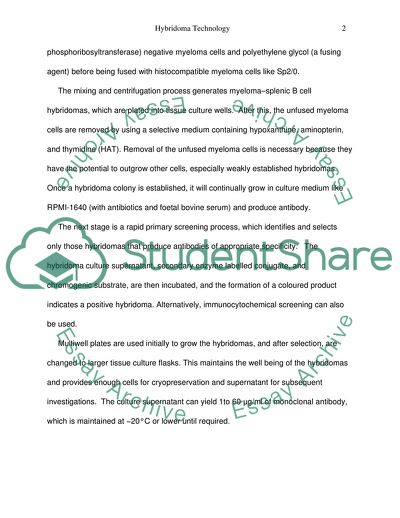Cite this document
(Hybridoma Technology Coursework Example | Topics and Well Written Essays - 1500 words - 1, n.d.)
Hybridoma Technology Coursework Example | Topics and Well Written Essays - 1500 words - 1. https://studentshare.org/biology/1704064-hybridoma-technology
Hybridoma Technology Coursework Example | Topics and Well Written Essays - 1500 words - 1. https://studentshare.org/biology/1704064-hybridoma-technology
(Hybridoma Technology Coursework Example | Topics and Well Written Essays - 1500 Words - 1)
Hybridoma Technology Coursework Example | Topics and Well Written Essays - 1500 Words - 1. https://studentshare.org/biology/1704064-hybridoma-technology.
Hybridoma Technology Coursework Example | Topics and Well Written Essays - 1500 Words - 1. https://studentshare.org/biology/1704064-hybridoma-technology.
“Hybridoma Technology Coursework Example | Topics and Well Written Essays - 1500 Words - 1”. https://studentshare.org/biology/1704064-hybridoma-technology.


